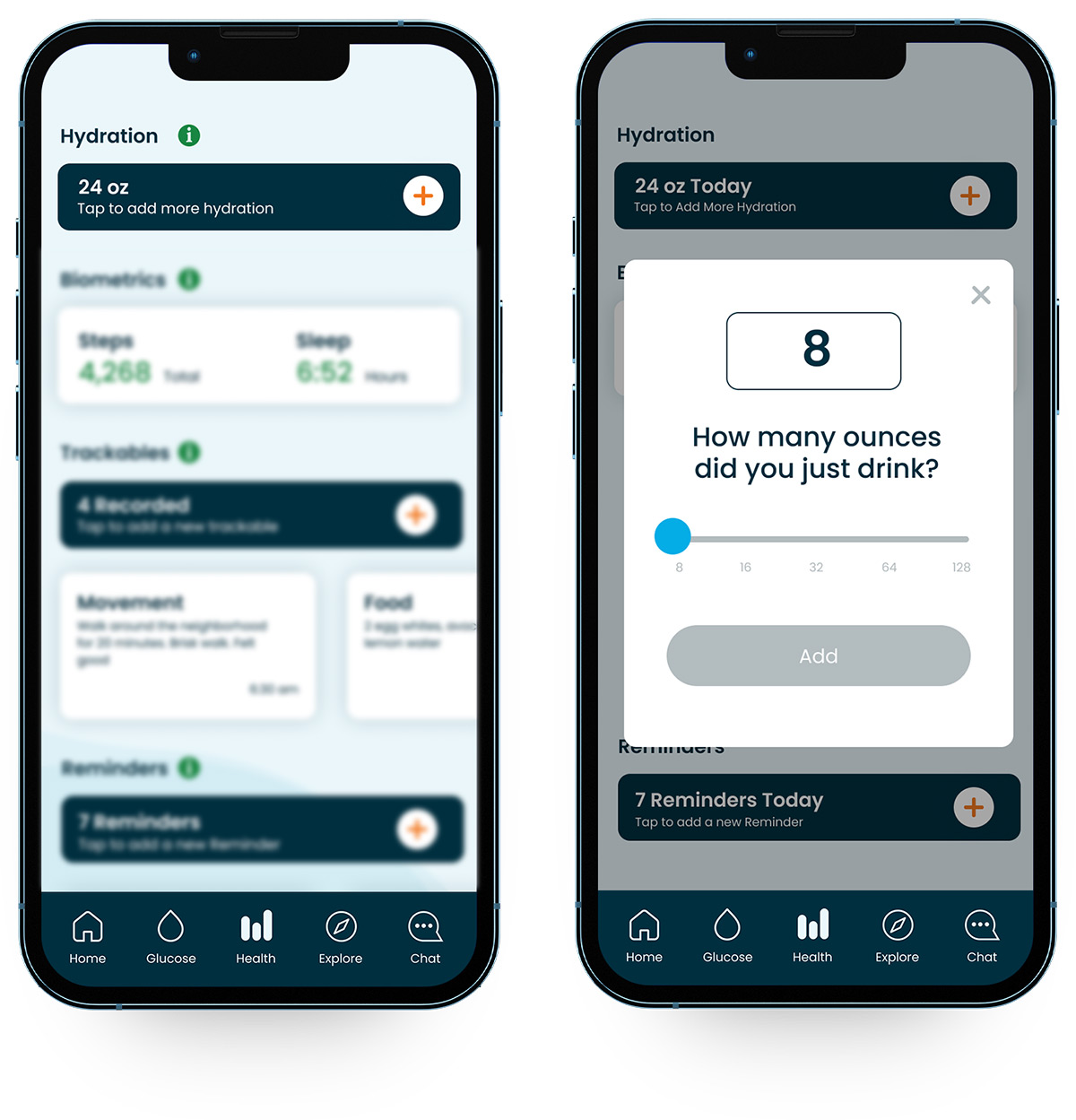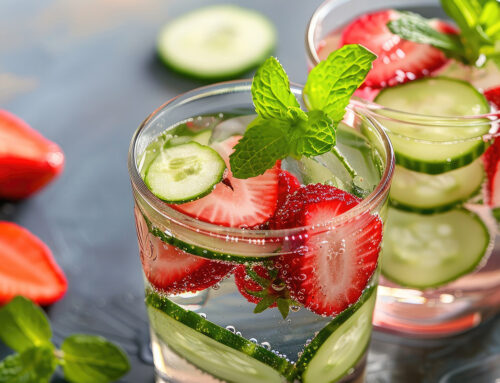Did you know that, on average, the human body is made up of 45-75% water (8)? It’s quite amazing! Proper hydration is essential for keeping your body functioning well. Many people don’t realize how much dehydration affects them because it’s become their normal baseline. Symptoms often attributed to “aging” or “facts of life” may actually be signs of dehydration. These can include elevated blood sugar, dry skin, headaches, irregular bowel movements, and increased fat stores.
Hydration: The Key to Optimal Health
There are numerous benefits to staying well-hydrated, such as improved blood pressure, fewer headaches, and better blood sugar management due to efficient glucose and insulin movement in the blood. Remarkably, some research even suggests that adequate water intake can positively impact body composition by boosting fat metabolism. This may happen through an increase in lipolysis, the process by which fats are broken down in the body, which is associated with higher water intake (6).
Just as drinking water can enhance our health, not drinking enough can lead to negative consequences. Dehydration can raise blood sugar levels as the concentration of glucose in the blood increases, reduce kidney function, and make it more difficult for the body to flush out toxins. Imagine your blood as a river flowing through your body. Without enough water, it’s like the river drying up, leaving behind more dirt and debris. In this case, the dirt and trash represent excess sugar and toxins in your blood. Just as a river needs enough water to flow smoothly and clear away dirt, your body needs adequate hydration to keep blood flowing well, regulate sugar levels, and keep your system clean.
How Much Water Should You Drink Each Day?
Your recommended daily water intake depends on factors like age, gender, activity level, medical conditions, and even the weather. However, as a general guideline, the Institute of Medicine suggests that:
- Men should aim for about 112 ounces (around 14 cups) of water daily.
- Women should aim for about 78 ounces (around 10 cups) of water daily.
Reaching your recommended daily water intake can be challenging, but here are three simple tricks to help you stay hydrated every day.
Trick 1: Infuse Your Water with Flavor
Drinking plain water can sometimes feel monotonous, but adding natural flavors from fruits, herbs, and even vegetables can make it more enticing and enjoyable. Infused water not only tastes better but also provides extra nutrients and antioxidants from the added ingredients, which can encourage more frequent drinking and help keep you hydrated. Remember the three “P’s” when flavoring your water:
- Practice New Recipes: Experiment with combinations like cucumber and mint, lemon and ginger, or strawberry and basil. You can use fresh or freeze-dried fruits or even freeze the ingredients in ice cube trays.
- Preparation: Add your chosen ingredients to a jug of water and let it sit in the fridge for a few hours to infuse.
- Portability: Use a reusable water bottle with an infuser compartment to take your flavored water with you on the go.
Trick 2: Use Technology to Track Your Intake
Using technology can make tracking your water intake easier and more enjoyable. It’s easy to fall into the habit of thinking you’ve had plenty of water just because you’ve been sipping all day—when, in reality, it’s still the same bottle that was never refilled. With an app like myTula, you can monitor exactly how much water you’re actually drinking. Tracking your intake increases your awareness and often leads to a natural boost in your hydration habits without extra effort. Talk to your Tula HealthCoach for tips on using Trackables!

Trick 3: Establish a Hydration Routine
To get the most out of this trick, start by asking yourself these questions:
- When do I take my first sip of water every day?
- How much non-water liquid am I drinking?
- When do I find myself snacking during the day?
- What is the hardest part about meeting my recommended water intake?
Once you’ve answered honestly, think of a manageable solution to incorporate into a hydration routine. You might consider one of the options below—but remember, start small to avoid overwhelm!
- Morning Routine: Fill your coffee or tea mug with water first and drink it before reaching for another beverage.
- Meal Routines: Have water on hand before each meal to reduce the temptation to choose sugary drinks or diet sodas.
- Hunger Cues: Drink a glass of water when you crave a snack—thirst is often mistaken for hunger!
- Easy Access: Carry a water bottle with you and take regular sips, especially during physical activities.
Developing a hydration routine can help you build lasting habits. By creating routines around water intake, staying hydrated becomes easier and promotes overall health through consistent hydration.
Sending Health Your Way!
The Tula Clinical Team
Austin MS, RDN, CSR, LDN, CD
Aubree RN, BSN
Tula Takeaways |
|---|
| 1. Changing Tastebuds: Your body replaces taste receptor cells roughly every 10 days, and taste preferences shift over time. Give your tastebuds something to enjoy by adding hydrating foods like cucumber, watermelon, celery, and strawberries to your water. It’s a delicious way to stay hydrated and boost your nutrients! |
| 2. Measuring What Matters: Pay attention to even small hydration habits to boost your success. Tracking your water intake can make a big difference, and your Tula HealthCoach can offer tips to make this easier. |
| 3. 1% Better: Instead of aiming to hit your full water goal right away, start by tracking your current intake. Then, try adding just one or two more cups daily. This gradual approach makes staying hydrated feel manageable and can help turn it into a lasting habit. |
The LIVE TULA blog is informational and not medical advice. Always consult your doctor for health concerns. LIVE TULA doesn’t endorse specific tests, products, or procedures. Use the information at your own risk and check the last update date. Consult your healthcare provider for personalized advice.






